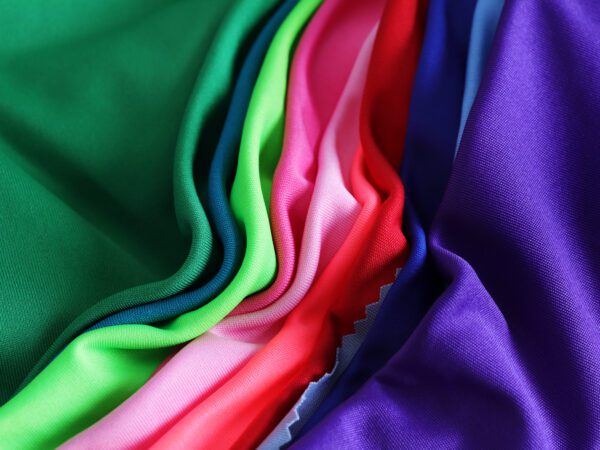Is Spandex Fabric Tougher Than Nylon?
November 30, 2022

One question that has been a topic of discussion among textile experts for decades is: “Is spandex fabric tougher than nylon?” The answer to this question depends on the factors you consider: Elasticity, cost, and the production process. Let’s examine these factors individually and see how each contributes to fabric strength.
Elasticity
Elasticity is a crucial feature of clothing made from spandex fabric. This fabric can be stretched up to seven times its original length and retain its shape. This characteristic gives spandex garments good shape retention and range of motion. For this reason, black spandex fabric is trendy for making athletic clothing and sportswear.
This fabric’s elasticity is due to the stretchable properties of its fibers. Its fibers are made of a long-chain polymer called polyurethane. This polymer is more elastic than other plastics and is better at resisting heat, oil, and water. Spandex yarns’ chemical and physical properties are similar to those of polyester. The spandex fibers have the same density, tensile strength, and heat conductivity.
Spandex fabric can be cleaned with domestic detergents and is not affected by dry cleaning strippers. However, it is essential to use something other than hot water to wash spandex garments as it can reduce the elasticity of the fabric.
Durability
Durability is an essential characteristic of spandex fabrics. Spandex fibers are composed of many small amorphous segments twisted together during manufacturing. This creates a material that is strong yet flexible. After the fibers are manufactured, they undergo several tests to determine their elasticity, resilience, and absorbency.
Another characteristic of spandex fabrics is their high level of stretch. They can be stretched up to eight times their length and then return to their original shape. A single spandex swatch can stretch a garment up to eight times. Adding spandex to clothing can effectively double the lifespan of the garments.
In addition to clothing, spandex fibers are used for various products. They are an excellent choice for products that require stretch, breathability, and durability. Seat cushions, furniture covers, and more can all benefit from the flexibility and durability of spandex. In addition, the fibers are soft and stretchable and can be dyed or combined with other fibers to create unique fabrics.
Cost
Spandex fabric costs are steadily increasing thanks to rising demand and lower supply. The fabric is widely used in protective and sports clothing thanks to its high elasticity and water and sweat resistance. The shortage of spandex supplies has accelerated the internal competition within the industry. This is a critical factor in driving the price up.
The fabric has become increasingly popular in recent years. It is found in thousands of different types of clothing. Its elasticity makes it an attractive choice for apparel manufacturers. However, pure spandex costs are relatively high compared to other materials. That’s why it’s commonly found in different types of textiles.
Its high elasticity makes it the perfect choice for bulk clothing production. However, it is essential to note that other materials are available for clothing production. Other textiles, such as cotton, can be stretchier than spandex fabric. A single layer of spandex can stretch up to eight times its original size. The stretching capacity determines how much elasticity it can impart to a material.
Production process
The production process of spandex fabric involves many processes. Producers monitor the product for physical and chemical characteristics throughout the production process. Testing consists in measuring the elasticity and resilience of the material. It also includes tests on the color and appearance of the material. This makes it possible for scientists to create textiles that offer desired properties.
In the first stage, macroglycol is mixed with a diisocyanate monomer. This reacts to form a prepolymer, which is a long, slender fiber. The next step involves adding a catalyst to the mixture. Once the conditions are met, the material is drawn out and shaped into a spool. This prepolymer is then used in the remaining stages of the spandex fabric production process.
Once the spandex fiber has been created, it is spun by a device that uses compressed air to twist it together. The finished spandex fibers are then immersed in a finishing agent to make them more flexible and pliable. The dead thread is then ready to be woven into fabric.
